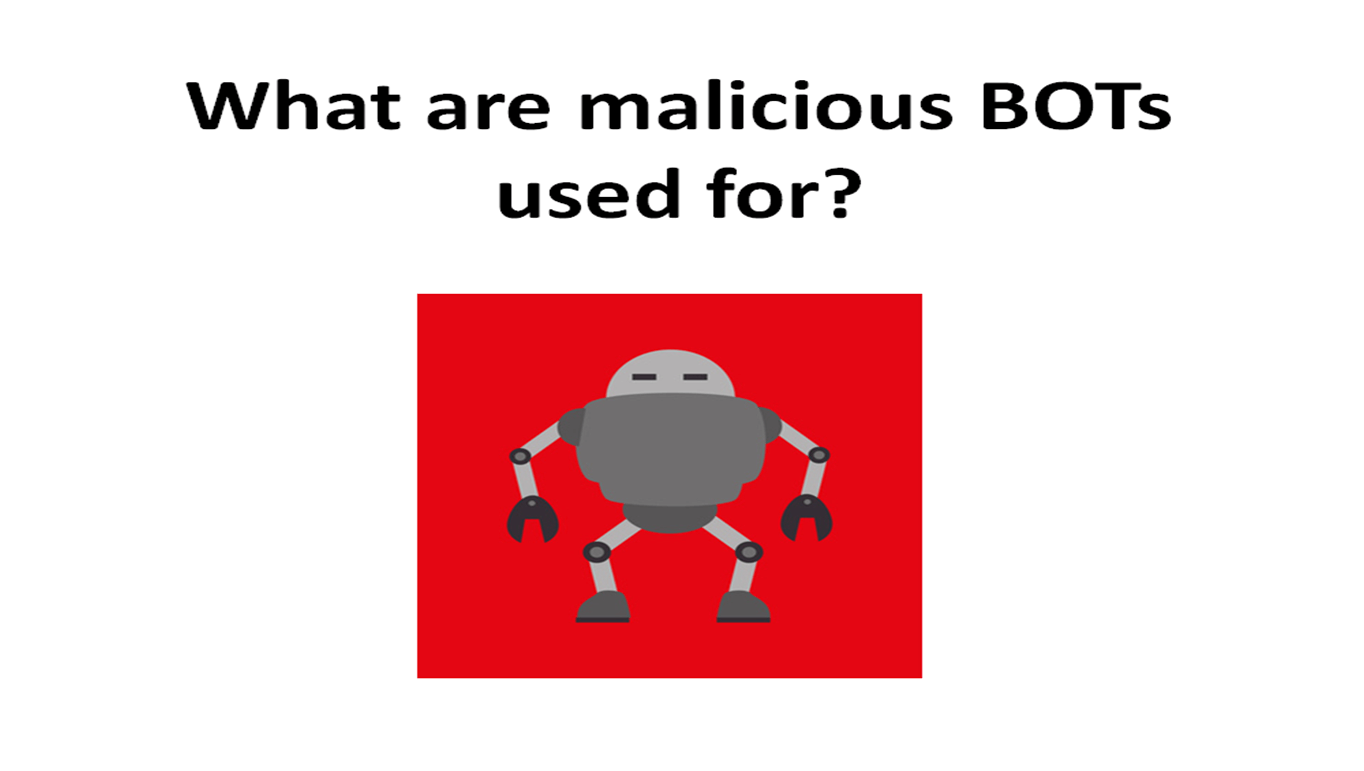What are malicious BOTs used for?

source: own elaboration
As we wrote before, the first BOTS were created to help people at work. And they really makes many actions easier, but not only for customer service and large databases employees, but also for fraudsters. Malicious BOTs have many uses and are dangerous for both Internet users and companies that use Internet marketing. What frauds are malicious BOTs used for? We will discuss some of them below.
What are malicious BOTs and how do they appeared on the internet user's device?
BOT, also called an internet robot, is an application that automatically performs the task programmed in its script. They were meant to be used to research and archive content published on the internet, in the process of customer service and other repetitive tasks in which they could replace human. Such good, useful BOTs are nowadays used all over the world, and internet users can find them everywhere. However, there are also bad BOTs, called malicious. Most often unaware Internet user accidentally downloads BOT while searching for another program or clicking on the infected link. Intimidating BOTs use a different tactic. They warn against an imaginary threat (for example a virus) and suggest that downloading a given file is the only way to protect your device. Then BOT installs itself, often using the name of other existing files, so it can go unnoticed for a long time.
How the creators of malicious BOTs use Internet users.
BOTs operate in secret, e.g. in the background of other programs, and thus can download and store data about their host. Among the most frequently stolen information we find: email addresses, access passwords or confidential information, including financial ones. Of course, BOT activity usually doesn't end with data collection. When BOT gains access to certain functions, it can attack device user or use him to conduct an organized attack. For example, spam BOT get its host email address to flood his inbox with massive amounts of spam, or if BOT has access to user's email, it can even use his email address and contact list. Such emails or other forms of communication sent by malicious BOTs may contain a link or file that after downloading installs the BOT on the next device.
One of the most dangerous varieties of these automated programs are so-called Zombie BOTs. They take control of a given device and connect them to their main server - their command center. This way, botnets are created, i.e. networks of devices infected by BOTs. Thanks to this, BOT creators can use them to carry out large, organized attacks on other websites.
Malicious BOTs pose a huge threat to all companies using the Internet.
Some BOTs were created to obtain more or less detailed data from site administrators or users visiting their pages. This may involve taking control of a given site, blackmail the owners or stealing personal information from its visitors. This kind of BOTs download email addresses from contact forms or logins and passwords from login pages, thus obtaining confidential user data. The information obtained in this way can then be used by the registration BOTs to create fake accounts on other websites.
Other BOTs dangerous for enterprises are so-called Website scrapers, i.e. programs that copy content from websites and then make it available without the author's consent on other websites. Such BOTs can be used by dishonest competitors or fake producers.
Whereas Fraud BOTs specialize in cheating companies using online marketing in their campaigns. Such BOTs are to generate artificial manifestations of user activity (such as clicks, registrations, leaving contact details, etc.) to inflate reports submitted to advertisers. They are used by dishonest publishers who want to rob their clients - the scammer bills the advertiser for false traffic generated by BOTs. This can lead not only to material losses, but also to a significant reduction in the effectiveness of a given marketing campaign.
Finally, BOTs can also be relevant on online forums and opinion forming websites. Their task may be to add malicious comments, negative ratings or to post provocative posts slandering a given company.
Above, we have only mentioned some of the threats associated with the activity of malicious BOTs. They are very dangerous for both companies and all Internet users. There are various ways to protect yourself against these malicious programs. Private individuals can invest in good anti-virus software, while companies need more professional protection and should use the services of experts.

